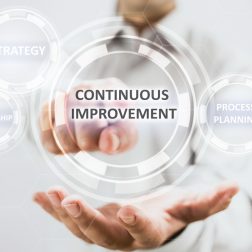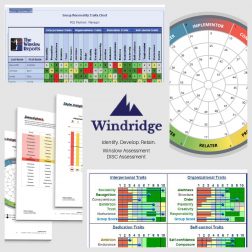 How do you help a new or current employee gain the most from the feedback they’ve received via the Winslow Assessment (or whatever assessment you use), and your coaching?
How do you help a new or current employee gain the most from the feedback they’ve received via the Winslow Assessment (or whatever assessment you use), and your coaching?
Answer: Always schedule a one-on-one session with each individual to review their assessment takeaways, next steps, and action plan.
Developing the habit of these reviews is an excellent opportunity for communication and understanding the employee’s point of view… Plus it creates accountability!
This session is best after the new hire/current employee has had one to two weeks to read through their Winslow Participant’s Report feedback.
During your one-on-one session, you’ll want to review the three behavioral traits they’ve identified (from their Winslow feedback) as assets to the work being done and how they plan to capitalize on them, as well as three traits that may be liabilities and how they plan to change or modify them.
Your job during a Winslow review or coaching session is to ask questions, and listen –
While it’s tempting to tell the new hire/employee exactly where they need to grow and present a detailed plan on how they should improve themselves, this approach almost always backfires. Remember, the employee’s “ownership” of their challenges and goals is paramount for successful growth and development.
With this in mind, the most productive approach is to ask questions, and then sit back and listen.
I know that listening (and not telling) can be difficult when you’re accustomed to giving feedback and not pausing to listen to someone else’s perspective. But remember, the employee is the one who will be making any changes, and their buy-in to this process is critical for success!
Research suggests nonjudgmental listening makes an employee more:
- relaxed
- self-aware
- less defensive.
To create a proactive environment during a Winslow review (employee coaching session):
- Listen carefully and thoughtfully to everything said. Don’t jump to conclusions or interrupt.
- Give the person space to express themselves and ask relevant questions to encourage them to keep talking. When people sense that others are truly hearing them, they’re much more likely to open up.
- Use eye contact and body language to signal that you’re focused on your employee and want to hear their thoughts.
- Refrain from suggesting solutions to problems. Ask more in-depth questions, or repeat questions, to help the employee discover solutions themselves.
Your goal when using assessment feedback is always to help your new hires and current employees help themselves.
“Tell me and I forget. Teach me and I remember.
Involve me and I learn.”
Benjamin Franklin
**** When you need help with behavioral assessing & hiring support or employee development, please do not hesitate to contact Windridge!



